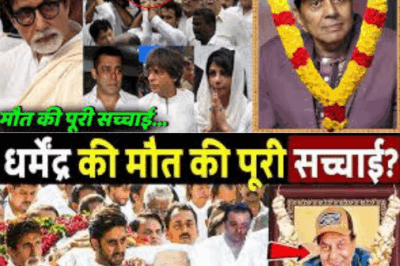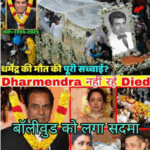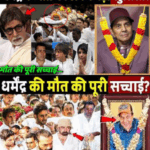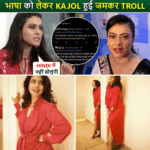Mrunal Panchal SELLING COPIED PRODUCTS and CLAIMING it her’s?| Mrucha COPYING it’s Manufacturer?
When Monal Panchal launched Mocha Beauty, her fans saw it as more than just another influencer‑founded cosmetics line. They saw ambition, creativity, and promise. With a strong personal platform already built on Instagram, Monal entered the beauty scene with statements of extensive research, thoughtful formulation, and premium ingredients—efforts to set her brand apart in a crowded marketplace. Yet as customers began comparing Mocha’s lip glosses and lip balms, whispers grew into louder concerns. Was Mocha truly offering something unique? Or was the brand leaning on style and price while fundamentally repackaging what already existed?
These doubts spring from a sharp examination of Mocha’s products, especially a lip gloss promoted as a “three‑in‑one hybrid: comfort of a balm, treatment of a lip plumper, and glamour of a high‑shine gloss—without stickiness, clean, vegan, cruelty‑free.” It contains 4 ml at a price of ₹649. On the surface, this positioning suggests premium quality and innovation, ostensibly justifying the higher price. However, scrutiny intensified when consumers noticed that the same manufacturing company responsible for Mocha’s products—Lirer, a Gujarat‑based manufacturer with its own affordable beauty line—also sells nearly identical products under its own brand.
The crux of the criticism: the Lirer lip balm offers the same 4 ml quantity, similar three‑in‑one description, and an almost identical ingredient list. Yet it’s priced significantly lower—roughly half compared to Mocha. For many, this raised an obvious question: what exactly is the extra ₹300 paying for? Packaging and the influencer’s branding? Because if the concepts, formulas, and even ingredients are the same, then Mocha’s premium positioning feels questionable. It starts to look less like innovation and more like re‑branding with a celebrity name attached.
Monal has cultivated her image carefully, portraying herself as someone who diligently researches, selects high‑quality ingredients, and crafts distinctive products—not another flashy label exploiting influencer fame. That narrative attracted many—especially those wanting to support a creator who “cared about quality.” But now, many feel betrayed. After discovering that the core product is the same as what her manufacturer sells under a different label, trust feels shaken. A key part of the allure was authenticity and effort—but if that authenticity is undercut, the brand loses its most compelling attribute.
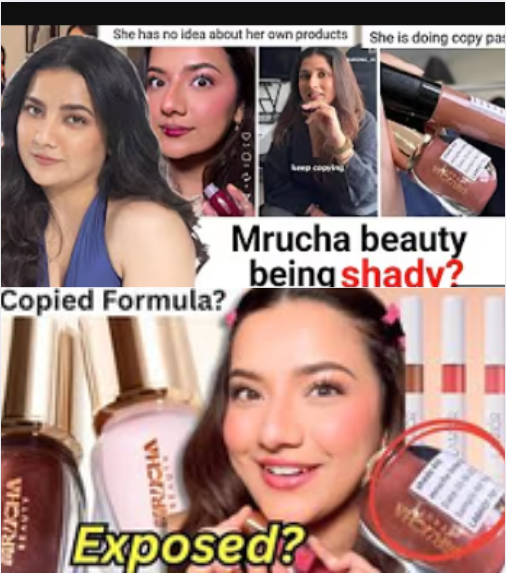
Complicating matters is the pricing strategy. In response to concerns about affordability and access, Monal initiated a gesture early on—sending free products to small influencers who otherwise couldn’t afford them, aiming to support their creative journey. It was a powerful gesture grounded in empathy, born from her own beginnings. Yet now, many question the rationale of simultaneously sending freebies while pricing the product high. If similar offerings are available for much less in the market, that goodwill effort feels undermined by inconsistent alignment.
Further criticisms target Mocha’s marketing style as derivative. Just as another beauty founder—Karishma of Fae Beauty—once received public criticism for allegedly copying unique content strategies, Mocha has drawn similar comparisons. Observers note strong similarities between Mocha’s founder’s reels and posts and those of other brands, particularly in storytelling aesthetics: sharing “journeys” of creating the product, conceptual origins, and formulation decisions. Some feel the approach lacks originality and comes off as imitative marketing rather than genuine narrative building.
From Reddit forums and public comments, the feedback is clear: “No research at all. First supplier found, she slaps names and shapes and was ready to post,” someone wrote. “So many reels showing how much research went in. She said she struggled selecting shades and formulating them, yet manufacturer just has a set of shades,” said another. These sentiments underscore how the heartfelt branding narrative now rings hollow to some eyes when traced to the reality of manufacturing sameness.
Yet, nuance remains. It’s plausible that Mocha added touches—perhaps more refined packaging, branding finesse, or slight adjustments in feel—and those elements may command a premium. Some of her fans still suggest giving the benefit of the doubt, believing Monal’s intentions were earnest and that perhaps real R&D did go into her line—even if it’s hard to see in ingredient lists. But the price‑value disconnect looms large when the consumer finds nearly one‑to‑one similarity in product offering and formula.
Still, not all feedback is negative. Some view Mocha’s brand as aspirational—even if the core product resembles others. Beauty is as much about presentation, story, and identity as it is about formula. For certain customers, supporting Monal—or buying into her vision of inclusivity, confidence, and expressive beauty—may justify the cost. But such justification hinges on alignment: if the story feels dissonant from the product, doubt takes root.
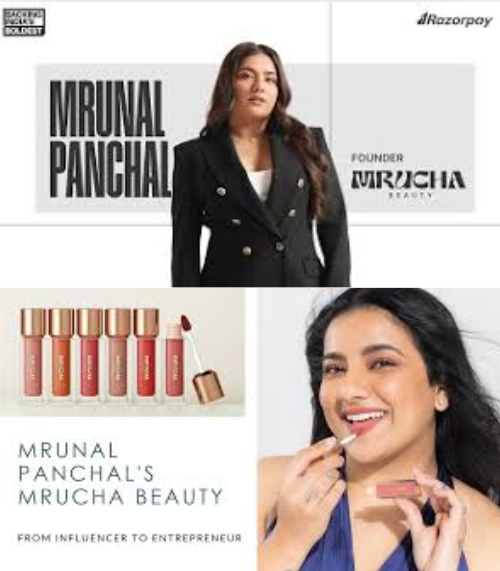
This is at the heart of influencer‑entrepreneurship’s tension. Followers expect transparency—and when brand messaging projects hard work and innovation, any sign of shortcut or re‑branding can feel like a breach. An influencer earns trust over time. Yet the marketplace is also unforgiving: consumers can smell overpricing, lazy marketing, or duplication—and they voice it loudly online.
Monal’s situation highlights the delicate balance of entering business with passion and persona. Her initial goodwill—supporting emerging creators, projecting refined product intention—got her rich favor. Now, she needs remedy: clarify her formulations, explain differentiation, maybe offer transparency on manufacturing differences, or adjust pricing to reflect market standards. More importantly, she must show courage in affirming that behind the shine, there was effort. Otherwise, the emotional connection she built could unspool fast.
In the broader beauty influencer landscape, Monal’s challenges are not unique. Many creators launch brands with big promises; some succeed by investing in true R&D and delivering novel product experiences—even if made in shared factories. Others stumble when their branding outpaces the substance. In Monal’s case, her supporters hope she can course-correct: lean into honest communication, highlight what truly sets her line apart, offer value without overreaching, and rebuild that bridge of trust.
The story of Mocha Beauty is a reminder: in today’s world, influencer legitimacy demands alignment of narrative and substance. Too often, brands chase hype. But long-term resonance—especially among young, socially conscious consumers—requires more. It needs clarity, quality, and credibility. As for Monal—this moment tests her authenticity. It’s also an opportunity: if she can address criticism head-on, listen to feedback, and evolve, she may yet reinforce her identity not just as a beautiful content creator, but as a thoughtful, honest entrepreneur.
Time, transparency and thoughtful action will be the arbiters. And perhaps that journey—from aspirational launch to refined, respected brand—will reaffirm what her audience saw in her from the start: not just a pretty face, but a creator striving for meaningful beauty.
Play video :
News
The whole truth of Dharmendra’s death? Dharmendra Death | Dharmender Death News | Dharmendra Ki Movie
The whole truth of Dharmendra’s death? Dharmendra Death | Dharmender Death News | Dharmendra Ki Movie In the digital age,…
Dharmendra’s Death News Goes Viral | Dharmendra News Today | Dharmendra News | Dharmendra
Dharmendra’s Death News Goes Viral | Dharmendra News Today | Dharmendra News | Dharmendra In an era dominated by social…
Did Dharmendra Really Pass Away at 89? Dharmendra Death | Dharmendra Death News | Dharmendra
Did Dharmendra Really Pass Away at 89? Dharmendra Death | Dharmendra Death News | Dharmendra In recent days, a wave…
What did the NDTV team see at the accident site in Uttarkashi? | Ground Report | Uttarkashi Cloudburst
What did the NDTV team see at the accident site in Uttarkashi? | Ground Report | Uttarkashi Cloudburst Uttarkashi, a…
Uttarakhand Cloudburst Viral video News😱 Such a storm came in Uttarakhand that destroyed the entire village
Uttarakhand Cloudburst Viral video News😱 Such a storm came in Uttarakhand that destroyed the entire village A sudden flash flood…
Sad news for Shehnaaz Gill Fans as as Shehnaaz Gill Hospitalized after serious condition is in ICU!
Sad news for Shehnaaz Gill Fans as as Shehnaaz Gill Hospitalized after serious condition is in ICU! In an emotional…
End of content
No more pages to load


